Metal Bifold Doors Buyer’s Guide: Options and Designs
Table of Contents
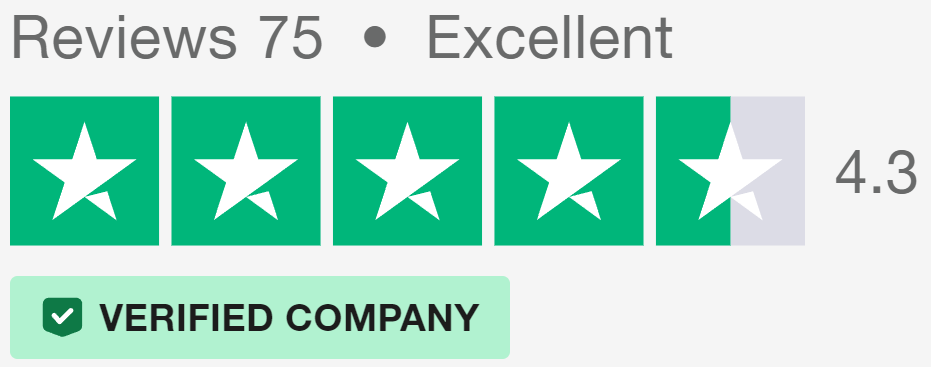
Why Choose Metal Bifold Doors?
Metal bifold doors strike a perfect balance between strength and visual appeal, making them a popular choice for modern British homes. Each material and design choice brings its own distinct qualities to your living space.
The rising popularity of metal bifold doors stems from their ability to combine structural strength with slim profiles. Modern manufacturing techniques have created systems that work smoothly while looking stunning.
Aluminium vs Steel vs uPVC Frames
Aluminium bifold doors lead the market in Britain thanks to their exceptional strength-to-weight ratio. Their frames can be made remarkably thin without sacrificing stability, creating wider views of your garden. Steel bifold doors offer an authentic industrial look that’s particularly striking in period properties, though they weigh more than aluminium alternatives.
While uPVC frames have their place, metal door frames prove superior for larger openings. The inherent rigidity of aluminium doors allows for bigger glass panels and wider spans, unlike uPVC which requires thicker frames to maintain structural integrity.
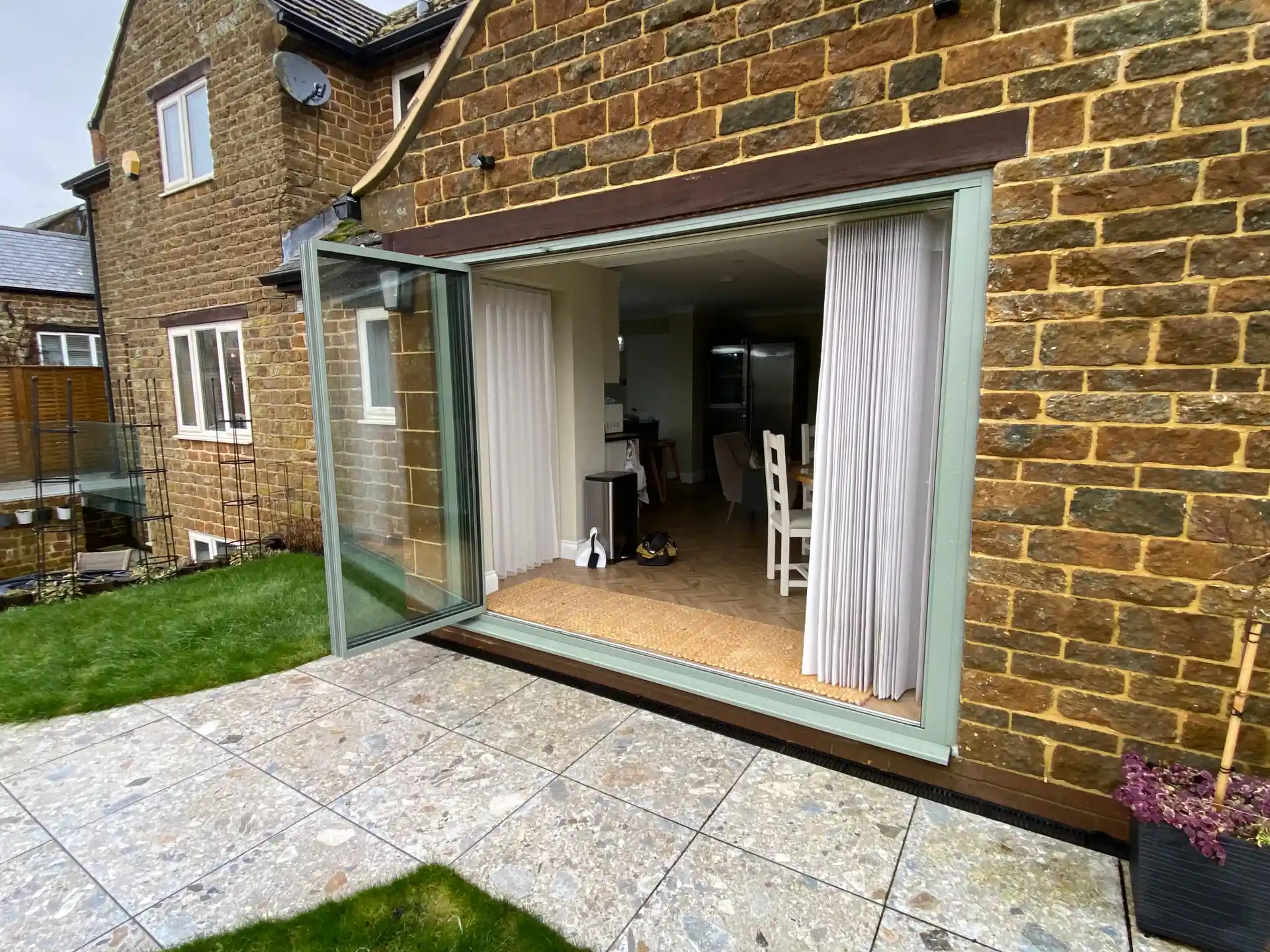
High Strength Meets Low Weight
The engineering behind metal bifold doors allows for impressively slim frames that don’t compromise on strength. Steel bifolding doors showcase remarkable durability, though their weight makes them better suited to smaller openings. In contrast, low profile bifold doors made from aluminium combine robust construction with easy operation and slim frames.
Modern aluminium alloys have revolutionised door design by providing exceptional strength at a fraction of steel’s weight. This makes them ideal for frequent daily use, as the reduced mass puts less strain on hinges and running gear.
Weather Performance and Durability
British weather demands robust materials that can withstand constant moisture exposure. Metal concertina doors excel here – their powder-coated surfaces resist corrosion while maintaining their appearance. Unlike wooden frames that can warp or swell, metal bi fold doors maintain consistent operation regardless of weather conditions.
Advanced Protection Systems
Today’s metal folding doors incorporate sophisticated barriers against the elements. Multiple weather seals, thermal breaks, and drain channels work together to keep rain and draughts at bay. Powder-coated finishes provide a tough shield against UV damage and weathering, preserving function as well as appearance for years.
The Science Behind Metal Bifold Doors
Modern metal bifold doors rely on precise engineering to deliver top-tier performance. The science behind their design covers everything from thermal efficiency to sound reduction.
Thermal Performance and Heat Transfer
Double glazed bifold doors made from metal need special attention to prevent heat loss. Thermal breaks – specially designed plastic barriers inside the frame – stop cold from travelling through metal bifolds. These breaks create two separate sections in the frame, limiting temperature transfer between indoor and outdoor surfaces.
The position of these thermal barriers proves vital during winter months. When in a closed position, well-designed metal bifold doors maintain comfortable indoor temperatures despite freezing conditions outside. The placement and size of thermal breaks determine how effectively the door system manages heat transfer.
Managing Condensation
Cold metal surfaces can attract condensation, but proper thermal engineering prevents this issue. Modern bifolding door systems use advanced thermal break technology and special glazing spacers to keep surface temperatures above the dew point. This stops condensation forming on the inside of the frames during cold spells.
Metal Alloys and Door Design
The specific alloys used in metal bifold doors make a huge difference to their long-term performance. High-grade aluminium alloys offer superior resistance to corrosion while maintaining structural integrity. These carefully formulated metals allow for sleek design without compromising strength.
Different alloys serve distinct purposes within the door structure. Load-bearing components use harder alloys for durability, while outer frame sections prioritise corrosion resistance. The right combination creates weatherproof bifold doors that last for decades.
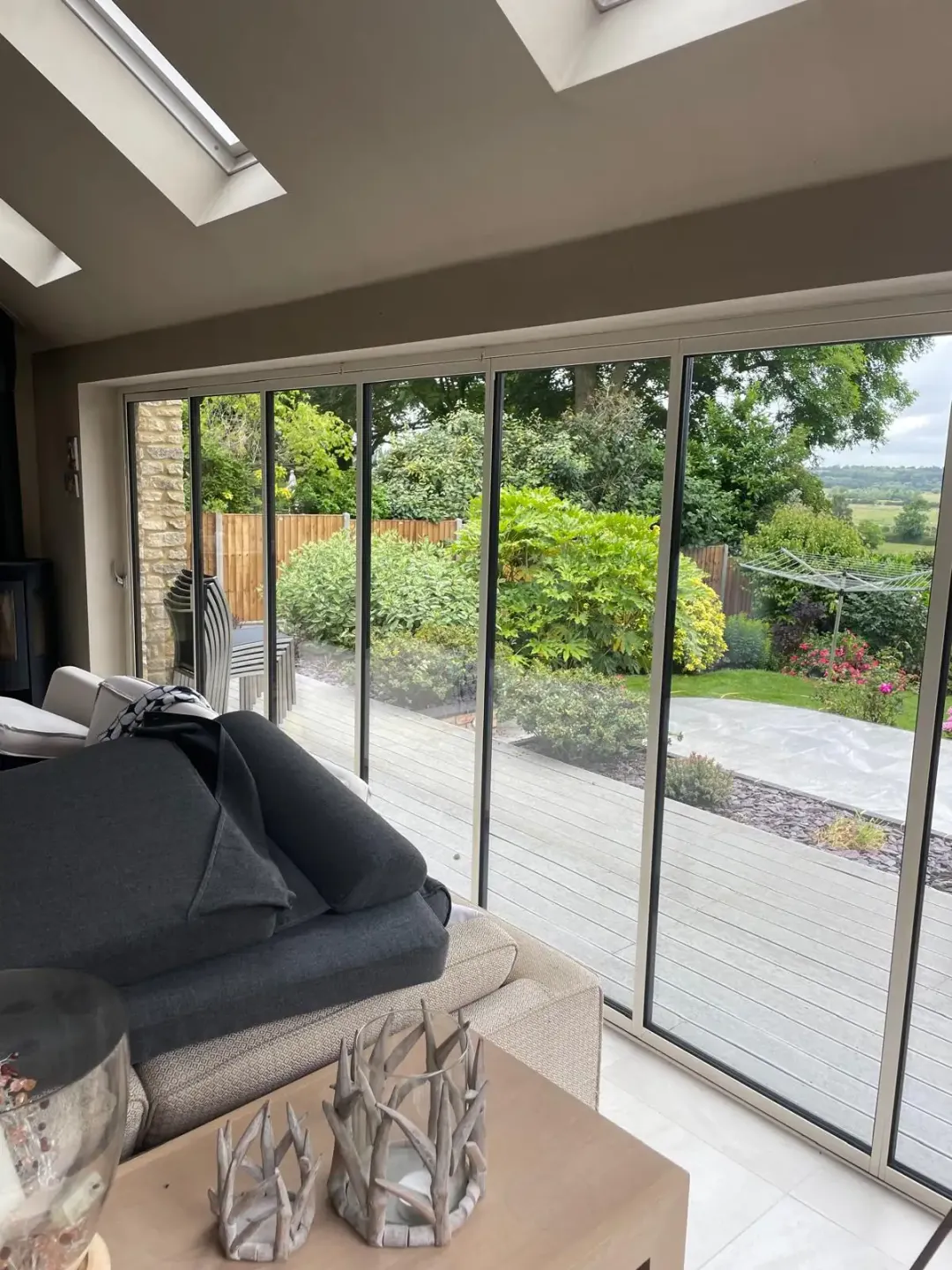
Sound Insulation Properties
Energy efficient metal doors don’t just keep heat in – they also keep noise out. The density of metal combined with thermal breaks creates natural sound dampening. Multiple layers of rubber gaskets between frame sections add extra acoustic insulation.
The thickness and composition of glass panels work with metal frames to reduce outside noise. Special acoustic glass includes internal dampening layers that absorb sound waves before they enter your home. When paired with metal bifold doors, these glazing units can cut noise pollution substantially.
The gap between glass panes also influences sound reduction. Wider spaces between panes generally improve acoustic performance, though this needs balancing against thermal efficiency. Advanced bifold patio doors use varying gap widths to target specific sound frequencies.
Engineering for Smooth Operation
Getting metal bifold doors to move smoothly requires precise engineering. Running gear – the wheels and tracks that guide the doors – must handle substantial weight while allowing easy movement. Top-hung systems put less strain on the mechanisms by carrying the door weight above rather than below.
The relationship between frame strength and hardware durability determines long-term reliability. Over-specified hardware on weak frames leads to premature wear, while under-specified components can’t handle the loads involved. Quality metal door frames match hardware specifications exactly to ensure consistent performance.
Track design plays a major part in operation. Self-cleaning channels prevent debris build-up that could impede movement. Stainless steel wheels with sealed bearings roll smoothly even after years of use, making daily operation effortless.
Metal Bifold Door Finishes and Colours
The finish on metal bifold doors determines more than just their appearance – it provides essential protection against the elements while creating visual interest. Modern coating technologies offer excellent durability with minimal maintenance requirements.
Powder Coating vs Anodising
Powder coating creates a tough, coloured layer that bonds directly to the metal surface. The process involves electrostatically charging dry powder particles, which are then baked onto the frame. This creates a thicker, more durable finish than traditional wet paint. Many homeowners choose black aluminium bifold doors for their striking modern appeal, though hundreds of RAL colours are available.
Anodising takes a different approach by chemically modifying the metal’s surface. This process thickens the natural oxide layer on metal bi folding doors, making them highly resistant to scratches and corrosion. While powder coating can chip if struck hard enough, anodised finishes are part of the metal itself and cannot peel away.
The choice between these finishes often depends on location and usage patterns. Coastal areas benefit from anodising’s superior salt resistance, while urban settings might prioritise the wider colour options of powder coating. Each method provides excellent protection when properly applied.
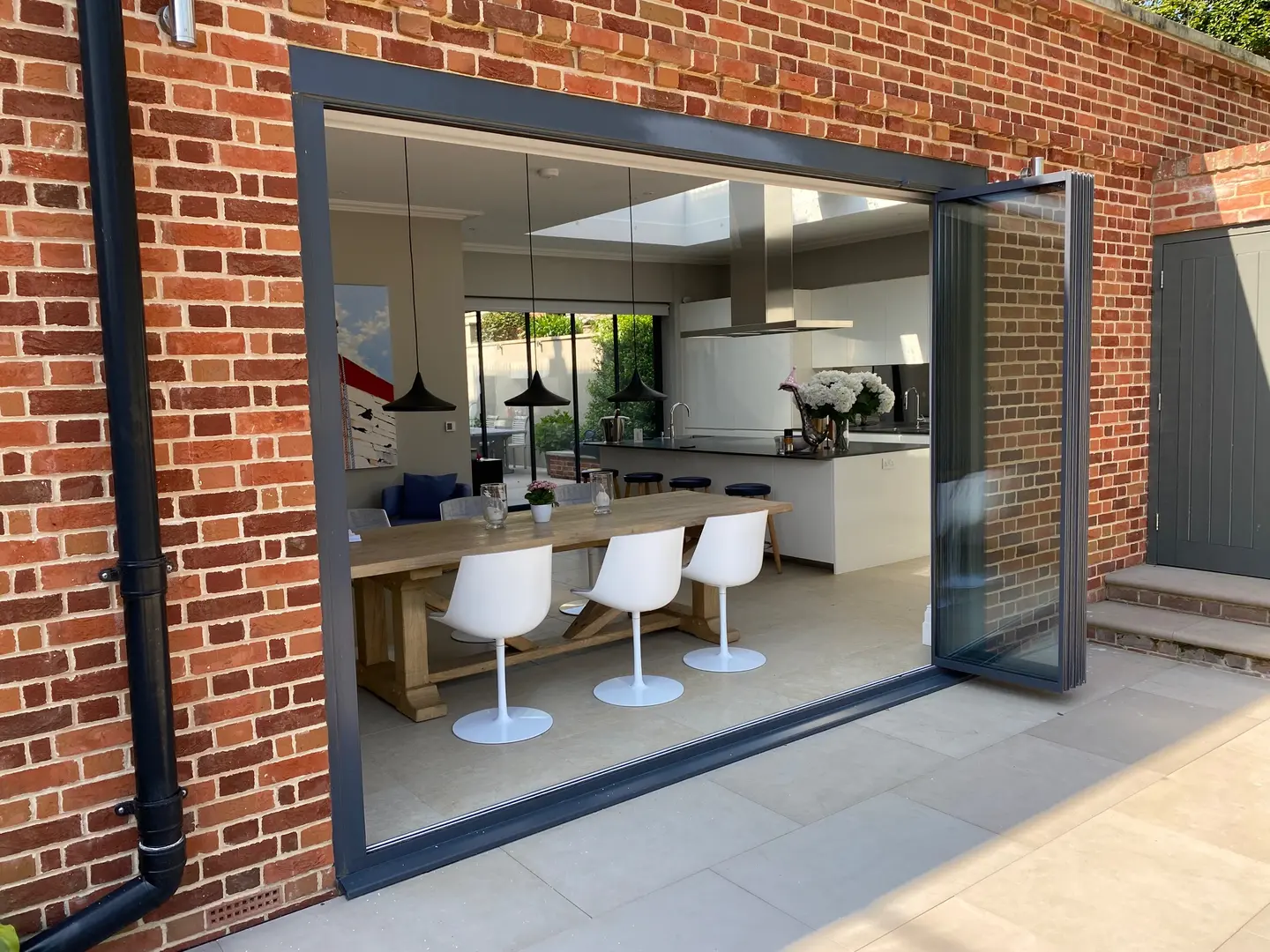
Custom Colour Options
Coloured bifold doors allow precise matching with existing architectural elements. Powder coating technology can recreate virtually any shade, from subtle greys to bold statement colours. The coating process ensures consistent colour across all components of bifolding doors.
Textured finishes add another dimension to metal bifold doors. These specialised coatings combine durability with visual depth, hiding minor scratches while creating interesting light play. Metallic finishes can mimic the raw beauty of bare metal while providing full weather protection.
Surface Preparation
The success of any finish depends heavily on proper surface preparation. Metal surfaces undergo thorough cleaning and chemical pre-treatment before coating. This creates optimal conditions for coating adhesion and long-term performance.
Surface Treatments for Durability
Advanced pre-treatments improve coating performance on architectural bifold doors. Chromate conversion coatings create an excellent base for powder coating, while special sealants protect anodised surfaces. These treatments work invisibly beneath the final finish to prevent corrosion.
Contemporary door design often combines different surface treatments. For example, internal frame surfaces might receive simpler treatments while exposed areas get maximum protection. This targeted approach provides durability where it matters most.
Living spaces near the coast need extra protection against salt spray. Special marine-grade treatments under the main finish provide additional barriers against corrosion. These multi-layer systems keep metal bifold doors looking fresh even in harsh coastal environments.
The Impact of Finishes on Maintenance
Quality finishes reduce maintenance needs greatly. Well-applied powder coating resists fading and chalking, maintaining its appearance with simple cleaning. Anodised surfaces stay bright without polishing, needing only occasional washing to remove dirt.
The thickness and quality of the finish directly influence longevity. Premium coating systems applied to exact specifications last decades without degradation. While basic finishes might save money initially, they often require more frequent maintenance or early replacement.
Surface hardness varies between finish types, determining scratch resistance. Hard anodised finishes excel in high-traffic areas where contact with objects is likely. Textured powder coatings can help disguise minor wear patterns that develop over time.
Modern Design Ideas for Metal Bifold Doors
Metal bifold doors offer fresh design possibilities for British homes, creating strong visual statements while improving natural light and views. Their adaptable nature suits various architectural styles, from period renovations to contemporary new-builds.
Industrial Style Done Right
Industrial style doors demand attention through their raw materials and bold proportions. The key lies in balancing the robust appearance of metal bi-fold doors with your home’s existing character. Dark powder coatings paired with exposed hardware create an authentic workshop aesthetic without looking too severe.
Steel frames provide the most genuine industrial appearance, particularly in larger spaces where their visual weight makes sense. The thicker profiles of steel add gravitas to metal bifold doors, while careful detailing prevents them from overpowering the room’s other elements.
Frame Proportions
Precise frame proportions make the difference between clunky and refined industrial designs. Vertical mullions should align with architectural features like ceiling beams or wall sections. This subtle coordination ties metal bi-folding doors into the broader space while maintaining their distinctive industrial character.
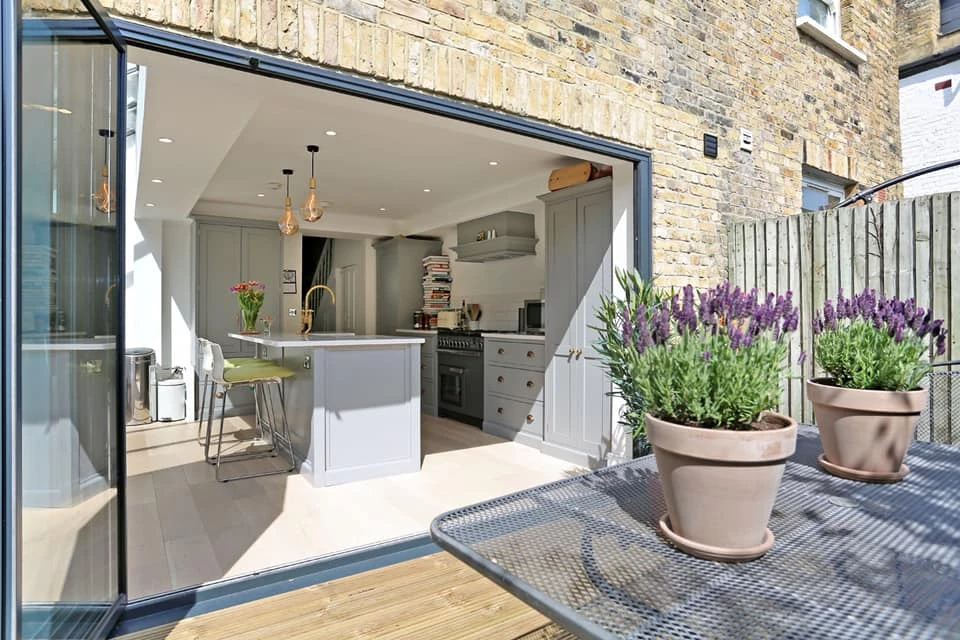
Minimalist Aesthetics
Slim aluminium frames create almost invisible barriers between inside and out. Modern metal bifold doors achieve incredibly narrow sightlines through advanced engineering, letting you focus on the view rather than the frames. These minimal profiles work particularly well in contemporary extensions where clean lines dominate.
Interior bifold doors benefit from the same minimal approach. When dividing internal spaces, slim metal frames maintain visual connections while providing acoustic separation. Glass panels spanning floor to ceiling make even modest rooms feel more spacious.
The hardware choice becomes especially important in minimalist designs. Flush handles and concealed hinges maintain clean lines, while carefully positioned locks avoid disrupting the frame’s pure geometry. Even the track system can disappear into the ceiling, leaving only the elegant frames visible.
Hardware and Handles
Choosing the right hardware for bifolding doors requires careful thought about daily use patterns. Lever handles should sit naturally under the hand, while magnetic catches need proper positioning to hold doors securely when closed. Quality hardware improves the whole experience of using your doors.
The finish on locks and handles should complement rather than match the door frames exactly. Slight variations in texture or tone create visual interest without clashing. For example, brushed stainless steel hardware often works better with powder-coated frames than exact-match pieces.
Integrating with Architecture
Modern metal bifold doors suit various architectural approaches. Their clean lines complement contemporary glass extensions, while industrial-inspired designs add character to converted buildings. The key lies in choosing frame sizes and finishes that respect the building’s original features.
Large glass panels change how we perceive space, making garden boundaries less obvious. Metal bi-folding doors frame these views like artwork, with slim frames drawing attention to the landscape beyond. Strategic placement relative to interior sight lines multiplies their visual impact.
Frame colours need careful selection to work with internal and external materials. Neutral tones often prove most successful, allowing the doors to bridge different design elements without competing for attention. Grey and black remain popular choices, offering sophistication without dominating the visual scheme.
The interaction between metal frames and surrounding materials deserves special attention. Stone, brick, and timber all respond differently to changing light conditions. Understanding these relationships helps create harmonious combinations that look good throughout the day.
Practical Aspects of Metal Bifold Systems
Metal bifold doors must balance practical performance with visual appeal. Every component plays its part in creating a system that works reliably year after year.
Security Features
The inherent strength of metal bi fold doors provides excellent security. Multi-point locking systems grip the frame at several points when closed, while anti-lift devices prevent the panels from being forced out of their tracks. Toughened or laminated glass adds another layer of protection without compromising the views.
Modern metal folding doors incorporate sophisticated locking mechanisms hidden within the frames. Shoot bolts engage automatically when the doors close, securing each panel individually. High-security cylinders resist picking and drilling, while reinforced keeps protect against forced entry attempts.
Internal beading – where glass is secured from the room side – makes it harder for intruders to remove glazing panels. Quality metal bifold doors combine these security features without looking institutional, maintaining clean lines while providing peace of mind.
Space Planning
The way metal concertina doors stack when open determines how much space you’ll need. Different configurations of bifolding doors suit different openings – some doors stack inside, others outside, while some can split the difference. Track positioning needs equal care, as it dictates how the doors operate.
A level threshold proves essential for easy daily use. Well-designed metal bifold doors integrate drainage channels below floor level, keeping water out while maintaining smooth access. Proper threshold design prevents trips while protecting your interior from wind-driven rain.
Traffic Door Options
Including a traffic door in your configuration lets you pop out quickly without opening the whole system. This separate hinged panel works like a normal door, saving energy and reducing wear on the main bifold mechanism. Quality metal bifold doors incorporate traffic doors without compromising security or weather protection.
Energy Efficiency
Modern metal bi fold doors achieve impressive thermal performance. Multiple weather barriers block drafts, while thermal breaks prevent heat escaping through the frames. Advanced glass units complete the thermal barrier, using warm edge spacers and gas filling to reduce heat transfer.
The relationship between frame depth and thermal performance needs careful balance. Deeper profiles allow more substantial thermal breaks but can look bulky. Leading manufacturers have developed slim frames that maintain excellent insulation without excessive visual weight.
Real-World Performance
British weather tests metal folding doors thoroughly. Wind loads push against large glass panels while driving rain probes for weaknesses. Quality systems resist these forces through robust engineering and precise manufacturing tolerances.
Track systems need particular attention in high-traffic settings. Stainless steel wheels running on anodised aluminium tracks provide smooth operation with minimal wear. Self-cleaning channels prevent dirt accumulation that might otherwise impede movement.
The hardware specification directly influences long-term reliability. Premium running gear costs more initially but maintains smooth operation far longer than basic components. Regular maintenance keeps everything working properly – simple tasks like cleaning tracks and lubricating hinges prevent most common issues.
Anti-finger trap gaskets and careful panel alignment make metal bifold doors safer in family homes. Magnetic catches control panel movement in windy conditions, while good quality door pulls make operation easy for users of all ages. These practical details matter as much as headline features in daily use.
We’d Love to Help You
Vision Glass Doors is a designer, manufacturer, and installer of premium door systems. We are a family run business with over 20 years’ experience and 5,000 installations across the UK.
Our leading range of door systems include Ultra Slim – Slide and Turn Doors, Slimline Sliding Patio Doors and Frameless Glass Doors. Suitable for various internal and external applications, they are applicable to residential and commercial projects.
Click Quick Quote Online for a free quotation within 24 hours. Alternatively, call or email us on 01582 492730 or at info@visionglassdoors.co.uk.

